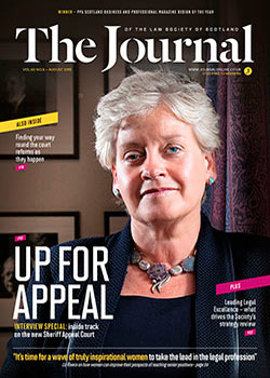Married to the land?

A frequent issue in farming divorce cases is whether the farm lands themselves are matrimonial property. Farming families commonly pass land down the bloodline by gift or inheritance. Accordingly, the spouse without a share of the title can struggle to establish that the lands come within the assets available for sharing (although they may form part of a claim under s 9(1)(b) of the Family Law (Scotland) Act 1985). Where the farm is operated by a partnership, the spouse (if a partner) may also try to include the land within its assets, particularly if there has been a restructure during the marriage.
An Outer House decision from July, Jack v Jack [2015] CSOH 91, provides further illustration of how land gifted to one spouse but used by a farming partnership should be dealt with under the framework of the Act. The parties had been married for over 40 years and the pursuer had worked on the farm throughout, initially alongside his parents. In 1997, having sold a parcel of adjacent land and paid off the partnership’s bank debt, his father retired from the firm, leaving the pursuer and his mother as partners. In the same year, the father gifted his son title to the main farmlands for no monetary consideration.
The security in favour of the bank remained in place, apparently due to an oversight, until discharged during corrective conveyancing in 2001. In 2005, the father, who was still owed a substantial sum by the partnership, instructed his accountants to treat this loan as a gift to his son (in effect, gifting his interest in the business by a credit to the son’s capital account). In 2006, the wife defender was assumed as a partner. At no time did the land appear on the books of the farming partnership, however constituted.
The principal issue was whether or not the main farmlands (valued at £1.5 million at the relevant date) were matrimonial or partnership property, which would give Mrs Jack a claim on their value. Her argument was based on the proposition that the partnership formed in 1997 had taken over the assets of the previously existing business for no monetary consideration and accordingly, as a matter of law, had also assumed its liabilities (Sim v Howat & McLaren [2011] CSIH 115). Such a binding undertaking to meet these liabilities was said to constitute consideration for the property transfers. The land was also matrimonial property since Mr Jack held the title in trust for the partnership, and in any event could not have marketed his title due to the undischarged security and the fact that the partnership was farming the land – both circumstances were submitted to constitute valuable consideration and hence bring the land within the definition.
Establishing gift
The court was not persuaded by these arguments, in the face of “what appears to be conclusive evidence” (para 25) that the transfer of the farmlands was a gift from Mr Jack senior. Lord Brailsford placed emphasis primarily on the terms of the disposition itself, which referred to “love, favour and affection”, but also accepted that while the standard security had not been discharged, this appeared to have been an oversight. The court took the view that while Sim is authority that there will be a presumption against gift where an existing partnership transfers assets to a new firm in an attempt to prejudice its creditors, there had to be “facts and circumstances which bring [the presumption] into play”, and there were not.
The court also considered that the capital introduced by the father through the 2005 credit was a gift despite the lack of a formal assignation of the partnership loan. Accordingly, the capital sum awarded was based on net matrimonial property which excluded the value of the gifted farmlands and the gifted interest in the partnership. The result was an award of £175,000, just over one seventh of the amount sought by Mrs Jack, with periodical allowance to reflect her position in terms of future employment.
While the courts have sometimes been prepared to explore whether the circumstances of a farmland acquisition bring it within the definition of matrimonial property despite the terms of the bare title (Marshall v Marshall 2007 Fam LR 48), in this case the court was not persuaded to look beyond the disposition itself. Accordingly, while the chain of land transactions in farming cases can be complex, Jack is a useful reminder that the basic principles of landownership and matrimonial property can still be applied in a straightforward manner. The defender has reclaimed although, at time of writing, the grounds of appeal are not yet known
In this issue
- A touch of EVEL
- Dad or undad: liability for paternity fraud
- FAIs – for what purpose?
- Too late to change your mind?
- Reading for pleasure
- Opinion: Beverley McLachlin
- Book reviews
- President's column
- Examination question
- People on the move
- Sheriffdom of Scotland
- Loans and financing throughout your career
- Courts reform: we have lift-off
- 2020: a changing prospect
- Purpose-driven women
- Under the hammer
- Sentencing shifts?
- Holiday headaches
- Married to the land?
- Rights before the regulator
- Time to get your pensions house in order
- Scottish Solicitors Discipline Tribunal
- Digesting the Community Empowerment Act
- Advice on tap
- Epilepsy training DVD helps spot the signs
- Law reform roundup
- From the Brussels office
- Your price – what's on the menu?
- Double danger
- Ask Ash
- Courts: the when and how
- Complaints go online
- What happens in Vegas, stays in Vegas
- Pro bono: a helping hand






